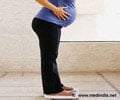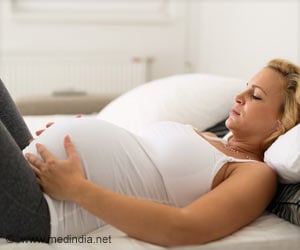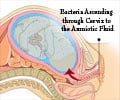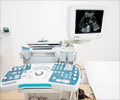Pregnancy leads to a 5% reduction in grey matter in the maternal brain, linked to estrogen fluctuations, with partial recovery postpartum and impact on maternal bonding.
- 5% reduction in brain grey matter during pregnancy
- Hormonal fluctuations (estrogen) drive changes in brain structure
- Postpartum recovery is linked to stronger maternal bonding
Pregnancy entails a U-shaped trajectory in human brain structure linked to hormones and maternal attachment
Go to source).
TOP INSIGHT
Did You Know?
94% of the brain undergoes grey matter changes during pregnancy. #medindia #maternalbrain
Neuroimaging and Study Design
The research used MRI as the primary neuroimaging method used in the longitudinal way to capture and monitor the professional development of the brain grey matter.Scans were conducted at three key time points:
- Pre-conception phase
- Second and third trimesters of pregnancy
- Six months postpartum
- First-time pregnant women
- Non-gestational mothers
Key Findings: Grey Matter Changes, Hormonal Influence, and Maternal Behaviour
The researcher identified differences in the grey matter of the brain that occur during pregnancy, especially during the first pregnancy. To be precise, there is a reduction of volume in grey matter in the brain by up to 4.9%, the reduction of which is observed in 94% of the brain. These changes are most marked in social cognition, which is as a net inclusive of such processes as appreciation of emotions in others, social interaction, etc. These regions are essential for attachment, and empathy, which is such a critical part of being a mother.Reduction of Grey Matter:
The loss of grey matter volume is considerable and occurs in nearly all regions of the brain. This decrease to 4.9% characterizes a significant reshaping of the brain that occurs during pregnancy. It is believed that this process is associated with the proliferation of new functional requirements during pregnancy to gain preparedness for parenthood.
Partial Recovery Postpartum:
It is worthwhile to mention that after childbirth, the brain gradually starts recovering and high levels of the grey matter volumes begin to increase and come back to the initial values. This recovery means that the changes are temporal and are part of the process of normalcy that enables the mother to lose weight after confirmed pregnancy.
Hormonal Influence:
This study determined estrogen decrease and that it is connected to brain alterations. In particular, the action of two specific estrogens: estriol-3-sulfate and estrone - sulfate was determined to be of significant importance. These hormones rise and fall at conception and during childbirth respectively, corresponding with changes in the amount of grey matter. The higher the increase and a subsequent decrease in the level of estrogen, the more serious the brain changes, including a reduction in the volume of the grey matter, and the more substantial the postpartum reversal.
Significance
The study is about brain plasticity and shows how the body of a woman alters as she goes through pregnancy and takes on the new roles and responsibilities of being a mother.Variation in hormonal levels, especially estrogens, seem to be responsible for these changes. Estrogen is known to act on the brain in some ways and this study gives concrete evidence that estrogen induced hormonal changes are what is at the root of the brain’s cyclical process of losing and gaining grey matter during and after pregnancy.
In this regard, this study goes a long way in explaining how the brain changes during pregnancy. This method proves that pregnancy occurs not only on the physiological level, but also at the neuroendocrine level, which indicates reorganization of the head for preparation for maternal behaviors and the formation of early mother-infant attachment.
Reference:
- Pregnancy entails a U-shaped trajectory in human brain structure linked to hormones and maternal attachment - (https://www.nature.com/articles/s41467-025-55830-0)
Source-Medindia
 MEDINDIA
MEDINDIA





 Email
Email










